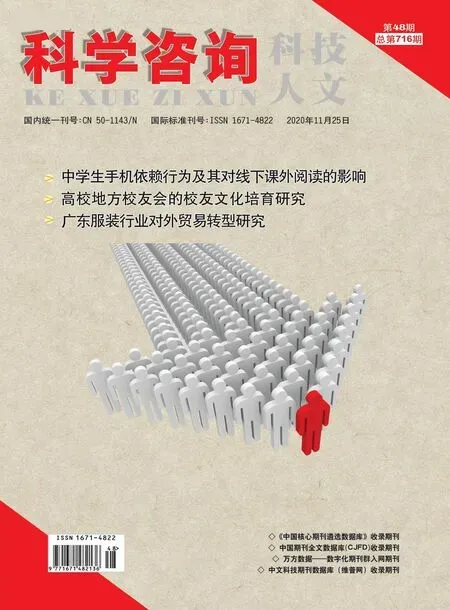“圖表法”排解中職學生英語閱讀學習障礙
黃玉虹
(重慶市輕工業學校 重慶 400700)
中職學生英語閱讀學習現狀分析:缺乏語言學習的思維能力,主旨大意歸納不出來;課外閱讀量少而不得法;缺乏總結分析能力,讀后積累總結分析能力欠佳;幾乎所有的閱讀文章只要老師不講,學生看不懂的現象大有人在,缺乏自主學習語言和解決問題的能力;從另一個角度來講,“圖表法”能更好地對英語文章進行拆分和整合,拆分的目的是理清文章的脈絡和結構層次,達到讀通讀透的目的,整合的目的是語言知識的積累和語言最后的口頭和寫作輸出。這樣能讓學生在解讀該篇文章的時候更能一目了然掌握文章主旨脈絡,把握文章細節,此方法尤其適用于說明文和議論文。為了更好地解讀圖表法在閱讀訓練中的應用,下面以一篇英語短文為例進行說明:
Do you think you can communicate without words? A smile on your face shows you are happy or friendly. Tears in your eyes tell others that you are sad. When you raise your hand in class, the teacher knows you want to say something or ask questions. You shake your head, and people know you are saying “No”. You nod and people know you are saying “Yes”. Other things can also carry messages. For example, a sign at the bus stop helps you to know which bus to take. A sign on the wall of your school helps you to find the library. Signs on the doors tell you where to go in or out. Have you ever noticed that there are a lot of signs around you and that you receive messages from them all the time? People can communicate in many other ways. An artist can use his drawings to tell about beautiful mountains, about the blue seas and many other things. Books are written to tell you about all the wonderful things in the world and also about people and their ideas. Books, magazines, TV, radios and films all help us to communicate with each other. They all help us to know about what is going on in the world and what other people are thinking about.
我們先把這篇文章的層次結構按照閱讀順序劃分。首先,通讀全文,先了解本文的主旨大意,劃分文章層次。先從三個方面對該篇文章進行拆分:main idea, main facts, conclusion,這樣拆分有助于學生從宏觀上把握文章的主旨大意,更好地解讀作者寫這篇文章的目的和意義,即“We can communicate without words”,一般說來,說明文和議論文的主旨大意在文章的開頭或結尾,這篇文章的主旨就出現在開頭,雖然是一個問句開頭,但從下面列舉的事實不難看出,第一句就是本篇文章的中心句。main facts部分作者從“A smile on your face shows...”一路寫到“Books, magazines, TV, radios and films all help us to communicate with each other”這里。Conclusion部分是文章的最后一句“They all help us to know about what is going on in the world and what other people are thinking about”。文章的整體脈絡如下表所示:

其次,精讀全文,找出支持論點的詳細論據。完成該部分內容時,要一邊精讀,一邊總結歸納,主旨大意和結論部分只有一句話不需要我們總結,關鍵是中間的main facts部分。比如“A smile on your face shows you are happy or friendly. Tears in your eyes tell others that you are sad. When you raise your hand in class, the teacher knows you want to say something or ask questions. You shake your head, and people know you are saying‘No’. You nod and people know you are saying‘Yes’.”從以上的劃線處能總結出這其實描述的是肢體語言——body languages.從“A sign on the wall of your school helps you to find the library. Signs on the doors tell you where to go in or out. Have you ever noticed that there are a lot of signs around you and that you receive messages from them all the time?”得出,signs也是我們交流的方式之一。此外,還有“other ways”等。所以,“main facts”部分,我們通過歸納總結得出三個論據來說明本文的論點:body languages, signs, other ways. 用下圖表示可能更清楚一些:

然后,關鍵句子提取文章主干,為下一步語言輸出做準備。這一步在完成時要盡可能列舉更詳細的語言信息,為最后的整合做鋪墊。比如,smile, tears, raise one’s hand, shake or nod one’s head分別指的是什么意思;不同場合的“signs”分別表示什么意思;“other ways”,還有哪些方面等。也就是說,在前面我們提取詞或短語的情況下,盡可能連詞成句,連句成段,為語言順利輸出做好準備,今后聊到相關話題時有一定的語言積累和知識傳輸。

最后,語法水平薄弱、片面地進行單詞識記是中職生閱讀英語文章時最大的問題,圖表法則能有效解決這一問題,可改變學生的定式思維和學習習慣,真正以語言應用為目的進行學習。應該說能夠避開應試教育的約束,在一種輕松自由的環境中學習更能激發學生學習英語的興趣和積極性,尋求適合自己的、更有效的學習方法。對于老師而言,教無無定法,教師應根據學生的需求及時調整自己的教學方法,把學生在初中英語學習時失去的自信找回來,重新定位學習語言的方向和意義。總之,圖表法只是眾多閱讀方法中的一種,學生在學習英語文章時,只要理清思路,把控細節,掌握不同題材的閱讀方法,便能達到事半功倍的效果。

